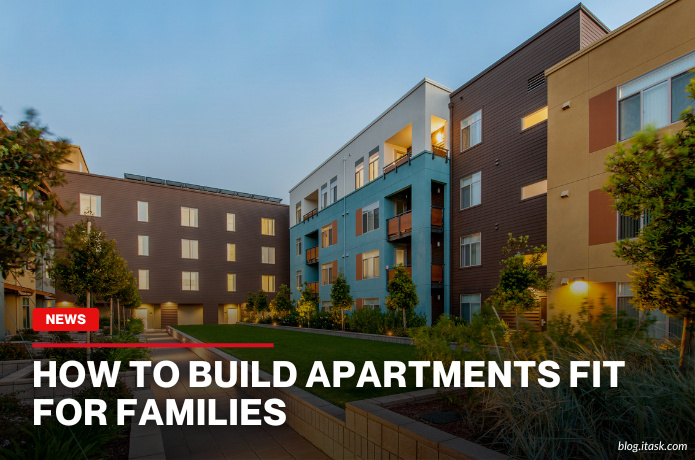How to build apartments fit for families
How to build apartments fit for families

As housing prices in Canadian cities continue to rise, more families are turning to apartments as a viable living option. This shift has prompted developers and city planners to rethink apartment designs to better accommodate family needs. In Toronto, for example, the average detached home price exceeds $1 million, pushing many to consider condos and apartments as more affordable alternatives. Recognizing this trend, developers are now focusing on creating family-friendly living spaces that offer both comfort and functionality.
One significant change is the inclusion of amenities tailored for children. Developments like Menkes’ The Eglinton and Harbour Plaza have introduced indoor playrooms and outdoor playgrounds, respectively. These spaces were designed in consultation with early childhood development specialists to ensure they meet the needs of young families. Such amenities not only provide safe play areas for children but also foster a sense of community among residents.
In addition to amenities, there is a growing demand for larger apartment units. The City of Toronto has responded by mandating that new condo developments include a percentage of two- and three-bedroom units. These larger units, often exceeding 1,000 square feet, offer families the space they need without having to leave the city. Developers are also incorporating features like larger kitchens, movable walls, and built-in laundry rooms to enhance functionality.
Design considerations extend beyond individual units. Architects like Michael Geller advocate for family-oriented features such as exterior corridors sheltered from the weather and enclosed balconies for additional play space. These design elements not only provide practical benefits but also encourage interaction among neighbors, which is particularly valuable for families with children.
Government initiatives are also playing a role in promoting family-friendly housing. In Calgary, for instance, the federal government invested $31 million to build affordable rental apartments for middle-class families. These units are located near schools, public transit, and other essential services, making them convenient for families. The building also incorporates energy-efficient features, reducing both environmental impact and utility costs for residents.
As urban living continues to evolve, it's clear that accommodating families in apartment settings requires thoughtful design and planning. By integrating child-friendly amenities, larger living spaces, and community-focused features, cities can create environments where families not only live but thrive. These efforts reflect a broader recognition that families are an integral part of urban communities and deserve housing options that meet their unique needs.
